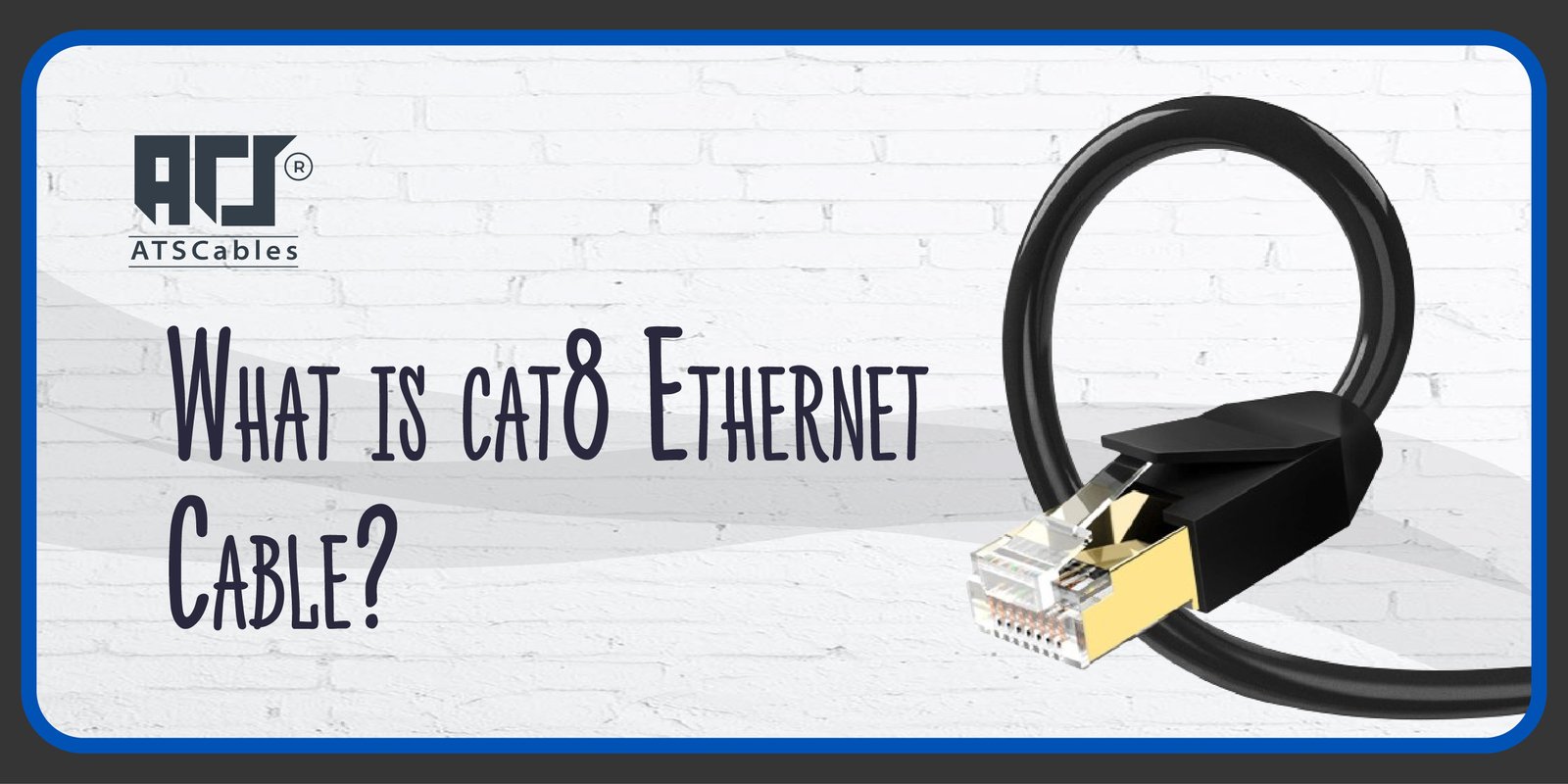
What Is Cat 8 Ethernet Cable?
The world of technology has seen rapid change in the last couple of years. There has been a constant demand for faster data transmission. It also meant that tech gadgets and accessories had to be upgraded so they could meet the changing demands.
This is one of the reasons why we saw the emergence of the cat8 ethernet cable. The cat cables have come along from the cat5. It offers greater speed and better reliability in terms of internet connectivity. So, if you want to know what cat8 networking cable is all about, then this article will help you out.
Cat8 Ethernet Cable Speed: Brief Overview
Wondering about the latest Ethernet cable technology? Look no further than Cat8! This advanced copper cable from the IEEE delivers significant improvements in data transmission compared to previous Cat generations.
Cat8 utilizes familiar RJ45 connectors, ensuring compatibility with earlier equipment. The key difference lies in its enhanced shielding. It features both shielded twisted pairs and an overall shielded jacket. This means that it incorporates conductive material to combat electromagnetic interference. This translates to:
- Faster data transfer speeds: Experience smoother data flow with fewer errors.
- Reduced crosstalk: Foil-wrapped twisted pairs minimize signal disruption, ensuring optimal signal integrity.
What is the Cat8 Ethernet Cable Speed?
Cat8 Ethernet is the newest network champion, leaving its predecessors in the dust. It’s not just great for gaming, but a future-proof solution for demanding users. Cat8 boasts a whopping 40 Gbps compared to Cat7’s 10 Gbps, meaning lightning-fast data transfer and smoother performance.
Furthermore, you can enjoy reliable connectivity over longer distances. Cat8 excels with a 30-meter reach, perfect for larger spaces. Most importantly, cat8 supports a bandwidth of over 2 GHz, doubling cat7’s capacity.
Therefore, you can get to experience faster data flow for high-bandwidth applications like data centers, gaming, and 4K/8K video streaming. Shielded with multiple layers, Cat8 cables shrug off electromagnetic interference and alien crosstalk, even in crowded environments.
Difference between Cat6 and Cat8 Ethernet Cable
Choosing the right Ethernet cable can significantly impact your network performance. Cat6 and Cat8 are two popular options, but they cater to different needs. Here’s a breakdown of their key features to help you decide which one is best for you:
| Feature | Cat6 Ethernet | Cat8 Ethernet |
| Maximum Speed | Up to 10 Gbps (ideally) | Up to 40 Gbps |
| Frequency | Up to 250 MHz | Up to 2000 MHz |
| Maximum Distance | 100 meters (328 feet) for 10 Gbps | 30 meters (98 feet) for 40 Gbps |
| Shielding | Various options (UTP, FTP, STP, SFTP) | Shielded (F/UTP) with multiple layers |
| Backward Compatibility | Yes | Yes |
| Cost | More affordable | More expensive |
| Applications | Home networks, offices | Data centers, high-performance gaming, 4K/8K video streaming |
As you can see, Cat8 offers a significant leap in speed and performance compared to Cat6. However, it comes with a shorter reach and a higher price tag. Cat6 is a well-established and affordable option for most home and office networks.
If you require blazing-fast speeds for data centers, high-end gaming, or 4K/8K video streaming, Cat8 is the future-proof choice. Consider your specific needs and budget when making your decision.
Difference between Cat7 and Cat8 Ethernet Cable
While Cat6 is a well-established standard for home and office networks, Cat7 and Cat8 represent the next level of wired connectivity. Let’s learn about the key differences between Cat7 and Cat8 to help you make an informed decision regarding which one to choose for your networking needs.
| Feature | Cat7 (Unofficial Standard) | Cat8 Ethernet |
| Maximum Speed | Up to 10 Gbps (potentially 40 Gbps at shorter distances) | Up to 40 Gbps |
| Frequency | Up to 600 MHz (theoretical) | Up to 2000 MHz |
| Maximum Distance | 100 meters (328 feet) for unspecified speeds | 30 meters (98 feet) for 40 Gbps |
| Shielding | Requires full shielding (F/UTP) | Shielded (F/UTP) with multiple layers |
| Backward Compatibility | No official standard exists | Yes |
| Cost | More expensive than Cat6 | Most expensive |
| Standardization | Not officially recognized by major organizations | Recognized by IEEE (Institute of Electrical and Electronics Engineers) |
How to Find the Best Cat8 Ethernet Cable?
While Cat8 offers impressive features, navigating the market to find the “best” cable can be tricky. Here are some key factors to consider when choosing a Cat8 Ethernet cable:
- Verification and Certification – Look for Cat8 cables that adhere to the IEEE 802.3bz standard. This ensures they meet strict performance specifications for speed, frequency, and signal integrity
- Shielding – All Cat8 cables require full shielding (F/UTP). However, some manufacturers might offer additional layers of shielding for enhanced protection against interference.
- Cable Length – Cat8 shines at shorter distances to achieve its maximum 40 Gbps speeds. Consider the cable length you need and ensure it falls within the guaranteed performance range (typically 30 meters or less for 40 Gbps).
- Bandwidth Requirements – Consider your current and future bandwidth needs. If you don’t anticipate needing 40 Gbps speeds immediately, a Cat6 or Cat7 cable might be sufficient.
Wrapping Up
The cat8 networking cable is the right choice for you to enjoy optimal speeds for data transmission. With ATS Cables, you can find the right length of ethernet cables according to your needs without going through any issues!
FAQs
Q1 Is Cat8 worth it over Cat6?
Cat8 offers faster speeds (40 Gbps) but is pricier and has shorter reach (30m for 40 Gbps). Cat6 is good for most home/office needs.
Q2 Does Cat8 require special equipment?
Cat8 cables work with older equipment, but to get the full 40 Gbps speed, you’ll need compatible adapters and switches.
Q3 Is shielded or unshielded Cat8 better?
All Cat8 cables are shielded (F/UTP) for better signal integrity at high frequencies. Unshielded wouldn’t meet the standard.
Q4 Can I splice a Cat8 cable?
Not recommended. Splicing can damage wires and degrade performance. Use properly terminated cables.
Q5 What are the limitations of Cat8 cables?
Cat8 cables are more expensive than Cat6/Cat7, have shorter reach for high speeds, and may be less available.
keep connected
Get updates by subscribe our weekly newsletter

